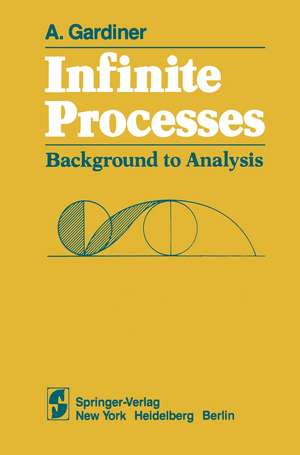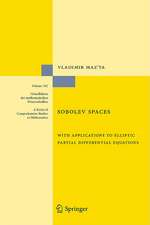Infinite Processes: Background to Analysis
Autor A. Gardineren Limba Engleză Paperback – 12 oct 2011
Preț: 389.49 lei
Nou
Puncte Express: 584
Preț estimativ în valută:
74.54€ • 77.35$ • 62.30£
74.54€ • 77.35$ • 62.30£
Carte tipărită la comandă
Livrare economică 15-29 martie
Preluare comenzi: 021 569.72.76
Specificații
ISBN-13: 9781461256564
ISBN-10: 1461256569
Pagini: 320
Ilustrații: X, 306 p.
Dimensiuni: 155 x 235 x 17 mm
Greutate: 0.45 kg
Ediția:Softcover reprint of the original 1st ed. 1982
Editura: Springer
Colecția Springer
Locul publicării:New York, NY, United States
ISBN-10: 1461256569
Pagini: 320
Ilustrații: X, 306 p.
Dimensiuni: 155 x 235 x 17 mm
Greutate: 0.45 kg
Ediția:Softcover reprint of the original 1st ed. 1982
Editura: Springer
Colecția Springer
Locul publicării:New York, NY, United States
Public țintă
ResearchCuprins
I From Calculus to Analysis.- I.1 What’s Wrong with the Calculus?.- I.2 Growth and Change in Mathematics.- II Number.- II.1 Mathematics: Rational or Irrational?.- II.2 Constructive and Non-constructive Methods in Mathematics.- II.3 Common Measures, Highest Common Factors and the Game of Euclid.- II.4 Sides and Diagonals of Regular Polygons.- II.5 Numbers and Arithmetic—A Quick Review.- II.6 Infinite Decimals (Part 1).- II.7 Infinite Decimals (Part 2).- II.8 Recurring Nines.- II.9 Fractions and Recurring Decimals.- II.10 The Fundamental Property of Real Numbers.- II.11 The Arithmetic of Infinite Decimals.- II.12 Reflections on Recurring Themes.- II.13 Continued Fractions.- III Geometry.- III.1 Numbers and Geometry.- III.2 The Role of Geometrical Intuition.- III.3 Comparing Areas.- III.4 Comparing Volumes.- III.5 Curves and Surfaces.- IV Functions.- IV.1 What Is a Number?.- IV.2 What Is a Function?.- IV.3 What Is an Exponential Function?.














